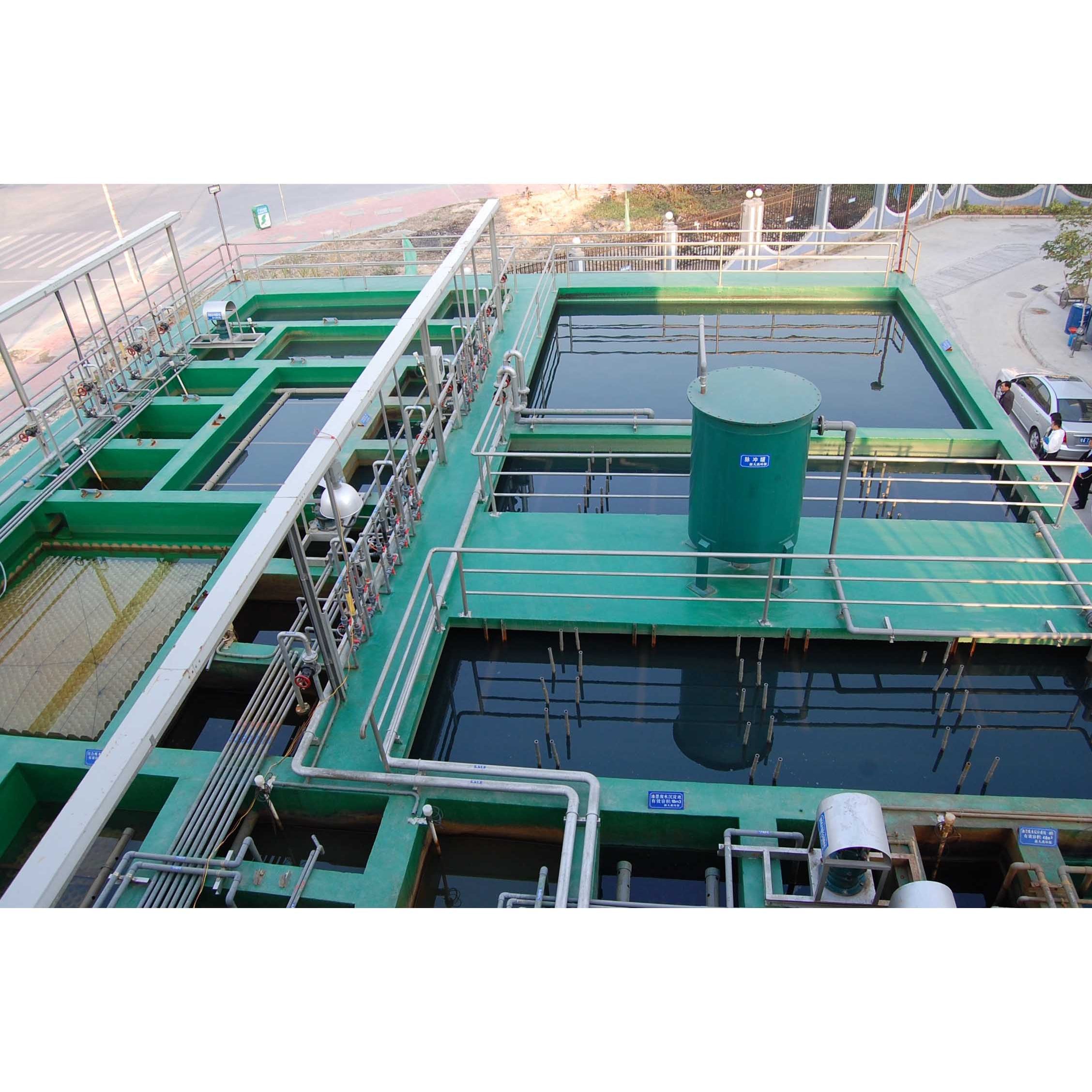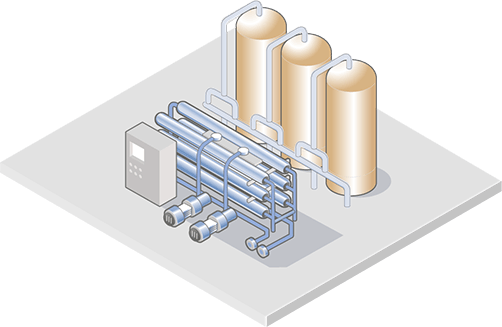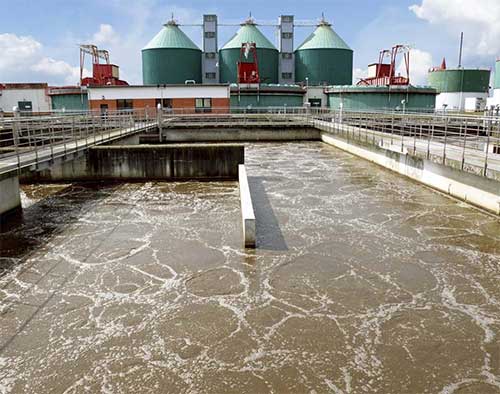Industrial Waste Water Treatment-- Industrial-Grade Water Purification and Purification Solutions
Industrial Waste Water Treatment-- Industrial-Grade Water Purification and Purification Solutions
Blog Article
Innovations and Developments in Industrial Waste Water Treatment Technologies
The landscape of industrial wastewater treatment is going through a transformative shift, driven by innovations that enhance both effectiveness and sustainability. As governing criteria evolve, the integration of AI and maker understanding into wastewater monitoring systems guarantees to guarantee and improve procedures compliance.
Introduction of Waste Water Therapy Technologies
Wastewater therapy technologies encompass a variety of methods developed to get rid of contaminants from industrial effluents prior to their release into the atmosphere. These modern technologies are crucial for keeping environmental balance and guaranteeing compliance with environmental regulations. The main groups of wastewater treatment consist of physical, chemical, and biological approaches, each serving distinct purposes based upon the nature of the pollutants present.

Organic treatment methods utilize microorganisms to weaken raw material, making them specifically efficient for organic-rich effluents. Methods like activated sludge and biofilm activators harness the all-natural degradation abilities of bacteria, causing considerable reductions in biochemical oxygen demand (BOD)
Advanced Filtering Techniques
Advanced purification methods represent an important advancement in the realm of industrial wastewater treatment, enhancing the efficiency of impurity elimination processes. Industrial Waste Water Treatment. These approaches include a variety of innovations, consisting of microfiltration, ultrafiltration, nanofiltration, and reverse osmosis, which give sequential barriers for numerous particle dimensions and chemical frameworks
Microfiltration and ultrafiltration make use of membrane systems to eliminate suspended solids, germs, and bigger natural particles, boosting the top quality of effluent before more therapy. Nanofiltration bridges the space in between ultrafiltration and turn around osmosis, efficiently eliminating divalent ions and natural compounds, thus minimizing the tons on downstream processes.
Reverse osmosis supplies the highest possible degree of filtration by enabling only water and small molecules to travel through its semi-permeable membranes, making it suitable for redeeming high-quality water from industrial effluents. Recent innovations in membrane modern technology, including the advancement of even more sturdy and fouling-resistant products, have considerably boosted operational efficiency and reduced expenses.
Including these sophisticated filtering strategies not just improves the total therapy process however also adds to sustainability initiatives by allowing water reuse and resource recuperation in commercial setups. (Industrial Waste Water Treatment)
Organic Therapy Technologies

Furthermore, the advancement of engineered organic systems, such as membrane layer bioreactors (MBRs), incorporates organic therapy with sophisticated membrane layer purification. This combination enables greater effluent top quality and reduced footprint, making it appropriate for space-constrained industrial centers. Advancements in genetically crafted microorganisms have actually additionally arised, boosting the biodegradation of certain impurities, such as pharmaceuticals and heavy metals, that are commonly testing to eliminate.
In addition, the application of bioaugmentation techniques, where helpful microbes are introduced to enhance the existing biological therapy processes, has shown promising outcomes in enhancing therapy efficiency. These advancements go now jointly represent a pattern towards even more effective and sustainable organic therapy methodologies that can adapt to the progressing intricacies of industrial wastewater streams. As sectors remain to focus on ecological compliance, these biological developments will certainly play a vital function in wastewater monitoring.

Source Healing Methods
In industrial settings, the assimilation of source healing methods has actually come to be increasingly vital for boosting sustainability and lessening waste. These methods concentrate on drawing out important products and energy from wastewater streams, consequently changing potential contaminants right into reusable resources.
One popular method is nutrient recuperation, where nitrogen and phosphorus, commonly present over in wastewater, are recorded and converted right into plant foods. This not only reduces ecological influences but additionally supplies a round economy service for agricultural applications. Additionally, innovations such as anaerobic digestion permit the conversion of organic waste right into biogas, a renewable resource source that can counter fossil fuel usage in industrial procedures.
Moreover, progressed purification and membrane innovations facilitate the healing of industrial by-products such as metals and salts. These recovered products can be rehabilitated right into manufacturing procedures, lowering the need for virgin resources.
Future Trends in Drainage Administration
As industries progressively focus on sustainability, the future of wastewater monitoring is you can look here established to undergo substantial transformations. Technical innovations, such as fabricated knowledge and artificial intelligence, will make it possible for more effective surveillance and administration of wastewater systems. These innovations can anticipate upkeep needs, maximize therapy procedures, and enhance decision-making, ultimately reducing operational expenses and ecological effect.
Additionally, the integration of circular economy concepts will certainly play a critical duty in wastewater administration. Industries are expected to move towards systems that not only deal with wastewater but also recoup useful resources, such as nutrients, water, and energy. This shift will decrease waste and advertise the reuse of products, straightening with global sustainability objectives.
Arising therapy methods, such as membrane bioreactors and progressed oxidation processes, will additionally improve the efficiency of wastewater therapy, permitting higher high quality effluents ideal for reuse. Furthermore, regulatory structures are most likely to advance, highlighting more stringent criteria for wastewater discharge and encouraging sectors to adopt cutting-edge treatment solutions.
Conclusion
In final thought, the evolution of commercial wastewater treatment technologies demonstrates a significant change in the direction of improved effectiveness and web link sustainability (Industrial Waste Water Treatment). Technologies in advanced purification methods, organic therapies, and source healing methods highlight the industry's dedication to environmental stewardship.
The landscape of commercial wastewater therapy is undertaking a transformative change, driven by technologies that enhance both efficiency and sustainability.Wastewater therapy modern technologies include a variety of approaches designed to eliminate contaminants from industrial effluents prior to their release right into the setting.Harnessing the power of organic processes has led to substantial innovations in the treatment of commercial wastewater.In addition, the application of bioaugmentation strategies, where beneficial germs are presented to boost the existing biological treatment processes, has revealed promising results in enhancing treatment efficiency. These innovations collectively represent a pattern towards more reliable and sustainable organic treatment techniques that can adapt to the developing intricacies of industrial wastewater streams.
Report this page